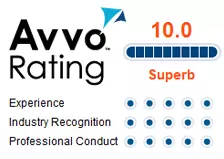BAC Tracker – Learn How to Predict Blood Alcohol Concentrations
We highly recommend this software for use in your drunk driving defense practice. The BAC-Tracker web site contains information about this invaluable tool.
You may also find this article helpful from Forensic Magazine’s enewsletter:
Estimating Blood Alcohol Levels
Accounting for the Uncertainties in Alcohol Metabolism Using Computer Software
by Henry J. Swofford, Managing Partner, BAC Tracker
Expert toxicologists are frequently faced with forensic estimations of blood alcohol levels during a variety of alcohol related incidents, specifically those involving the operation of a vehicle while intoxicated (DUI). Many toxicologists largely base their calculations on a previously established formula, the Widmark formula, published in 1932 for estimating blood alcohol concentrations (BAC). The formula is fairly complex when calculated and takes into account alcohol distribution and elimination in humans. Alcohol distribution in the human body, in particular, is a complicated process that relies on a number of different factors within an individual.
The Widmark formula utilizes a constant numerical value to account for alcohol distribution (called the distribution coefficient). Using a constant value for this distribution coefficient in the formula to account for all of the intricacies of alcohol distribution in the human body carries the potential of erroneous estimations in the amount of alcohol actually present in the blood at a particular time of interest. Five refinements to this distribution coefficient have been published over the years, the latest being in May 2007 [1]. Together they account for the differences that exist between individuals within the population. Each of these refinements is distinguished by the individual variables incorporated, whereas all variables utilized in all formulae have been found to be relevant in how alcohol distribution occurs in the human body. These differences, therefore, are reflected as a variety of estimated concentrations of alcohol in the blood at the time of a particular incident. Because of these differences, the use of all six formulae in conjunction with each other has been suggested in the literature to provide more accurate and comprehensive estimations of blood alcohol levels [1-2]. The problem with using all six formulae, however, is that these refinements to Widmark’s original distribution coefficient are actually quite lengthy formulae themselves, resulting in significantly more complex and time consuming calculation that increases the possibility of human error during the calculations.
In order to reduce the calculation time and the potential of erroneous estimations inherent with hand calculations of these formulae, a new computer software program (BAC Tracker®) was launched late last year which automatically provides estimations of blood alcohol concentration using all six previously published formulae. The software’s use of multiple formulae facilitates an accurate accounting for the uncertainties present in alcohol distribution in the human body. Other capabilities of the software allow for the employment of multiple rates of elimination to account for the uncertainties in alcohol metabolism as well as the capability to estimate alcohol levels while alcohol is still being absorbed into the bloodstream using multiple rates of absorption based on a recently published formula in 2005 by Uemura and colleagues [3]-a feature beyond the capabilities of either the Widmark formula or its refinements. The use of software in estimating blood alcohol levels which takes into account multiple formulae will supply the toxicologist with a higher degree of confidence and more accurate results in cases where there is a question of how much alcohol was present in the bloodstream at the time of a particular incident. More information about the software can be found at http://www.bac-tracker.com.
REFERENCES
- Posey, D. & Mozayani, A. The Estimation of Blood Alcohol Concentration: Widmark Revisited. For. Sci. Med. Path. 2007; 3:33-39.
- Zuba, D. & Piekoszewski W. Uncertainty in Theoretical Calculations of Alcohol Concentration. Presented at the 17th International Conference on Alcohol, Drugs and Traffic Safety (ICADTS), Glasgow, UK, 2004. Available at: http://www.icadts.org/T2004/022.html.
- Uemura, K., Fujimiya, T., Ohbora, Y., Yashuhara, M., Yoshida, K. Individual Differences in the Kinetics of Alcohol Absorption and Elimination. A Human Study. For. Sci. Med. Path. 2005; 1:24-7.
Henry J. Swofford is the managing partner of BAC Tracker, a group of forensic science professionals who manufacture, distribute, and support BAC Tracker Software as well as provide continuing education training on alcohol pharmacology and case consultation through detailed analyses of an individual’s blood alcohol profile.









